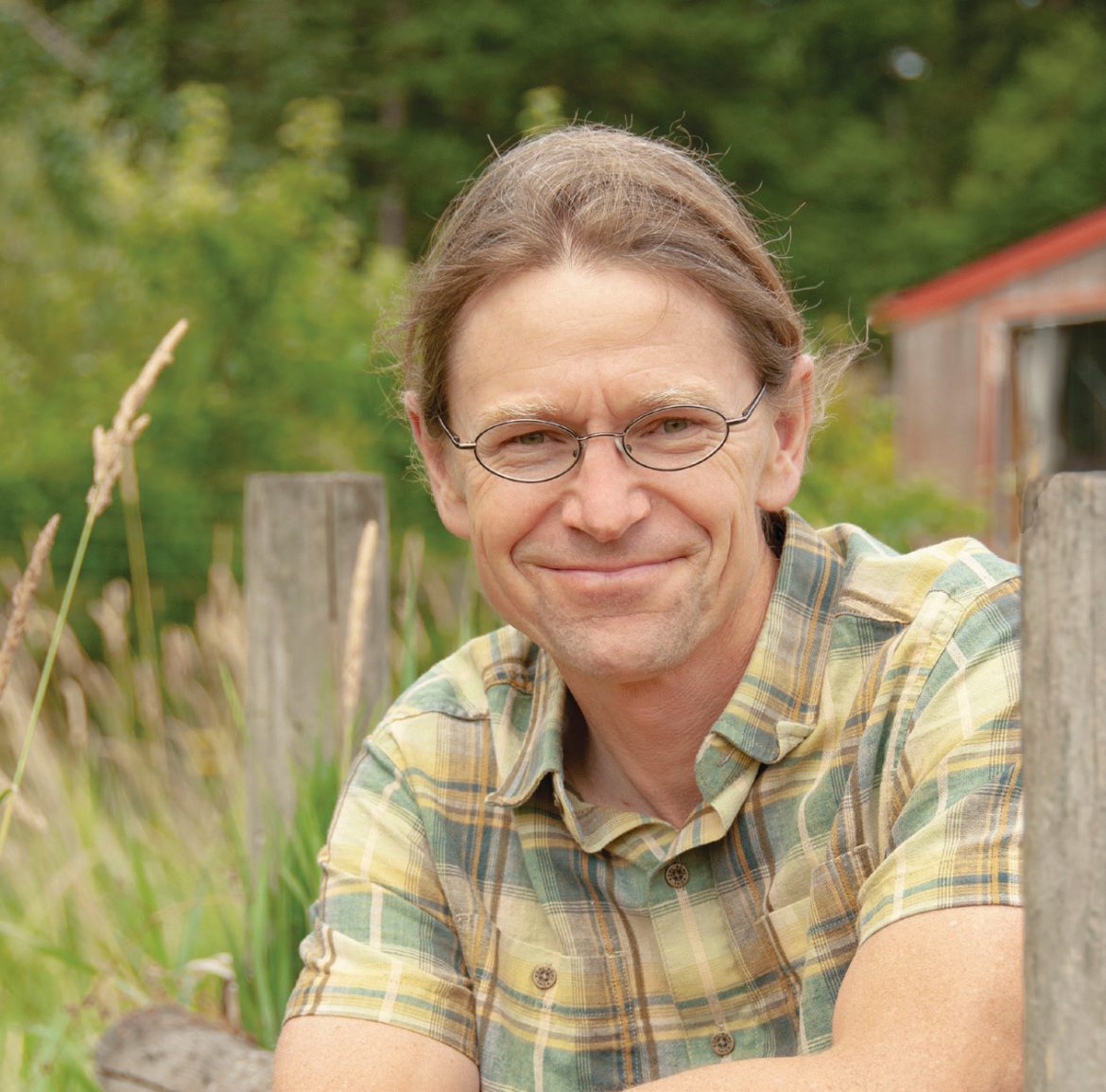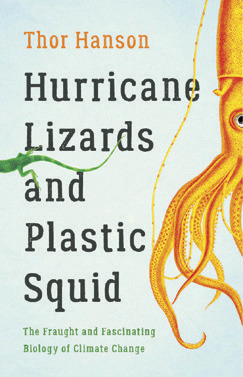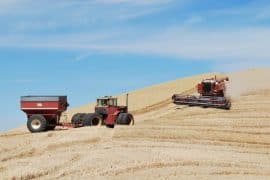Interview by Cathy Carroll
Thor Hanson’s latest work could transform the conversation around climate change
Thor Hanson grew up in Washington, where he caught his first salmon at age four, and collected caterpillars, garter snakes, hermit crabs and tree frogs as summer pets. More recently, his research and conservation work has ranged from helping establish the mountain gorilla tourism program in Uganda’s Bwindi Impenetrable National Park to aiding in management of a brown bear tourism project for the Forest Service in Alaska. He has co-hosted the PBS Nature series “American Spring Live,” has been a guest on several NPR programs and his work on warfare and ecology has been covered by news outlets around the world, from Scientific American and The New York Times to The Times of India.
Book critics have hailed him a lyrical and thought-provoking storyteller, and in his latest work, Hurricane Lizards and Plastic Squid, he reveals how plants and animals are responding remarkably to climate change: moving, adapting and even evolving. It’s a story of hope, resilience and risk. Hanson lives in the San Juan Islands.
Was there a particular finding during your research that prompted you to pursue this book?
It wasn’t a single experience—it was a deluge! Climate change has been upending biological expectations for decades, altering studies and outcomes for everything from pollinators to trees to, yes, lizards and squid. But most of those stories never get beyond a limited professional audience. I wrote this book to highlight the remarkable climate adaptations that biologists are seeing in the field every day. Plants and animals are changing fast, and the sum of their responses has a lot to teach us about the future—theirs, as well as our own.
What was the most remarkable, surprising, humorous or challenging moment for you during your research for this book?
The pickle jar! I devoted an early chapter in the book to improving my understanding of carbon dioxide, and found a ready source of it right in our own refrigerator. One jar of old, fermenting pickles provided enough pure gas to clarify the carbon cycle and explain the fundamental problem with burning fossil fuels. With a thermometer and a heat lamp, I was also able to see how carbon dioxide was trapping heat in the atmosphere of the jar. So remember, the next time you find something in your fridge that looks like a scientific experiment, it is a scientific experiment.
What are the most applicable strategies humans can model from other species— bush crickets, bumblebees and butterflies or others—for modifying our behaviors?
Other species inspire by example. Consider the lizards from the title of the book. They live exclusively on small Caribbean islands threatened by the uptick in powerful hurricanes. Moving is not an option, and their low-lying habitat offers little refuge. But instead of winking out, the lizards have come up with a solution: natural selection for larger, tree-gripping toe pads that help them hold on tight during high winds. It’s a humbling lesson. If a tiny reptile can evolve in response to this crisis, then it stands to reason we can change the behaviors bringing it about. Doing so will lessen the very need for amazing climate adaptations. And that’s a good thing.








